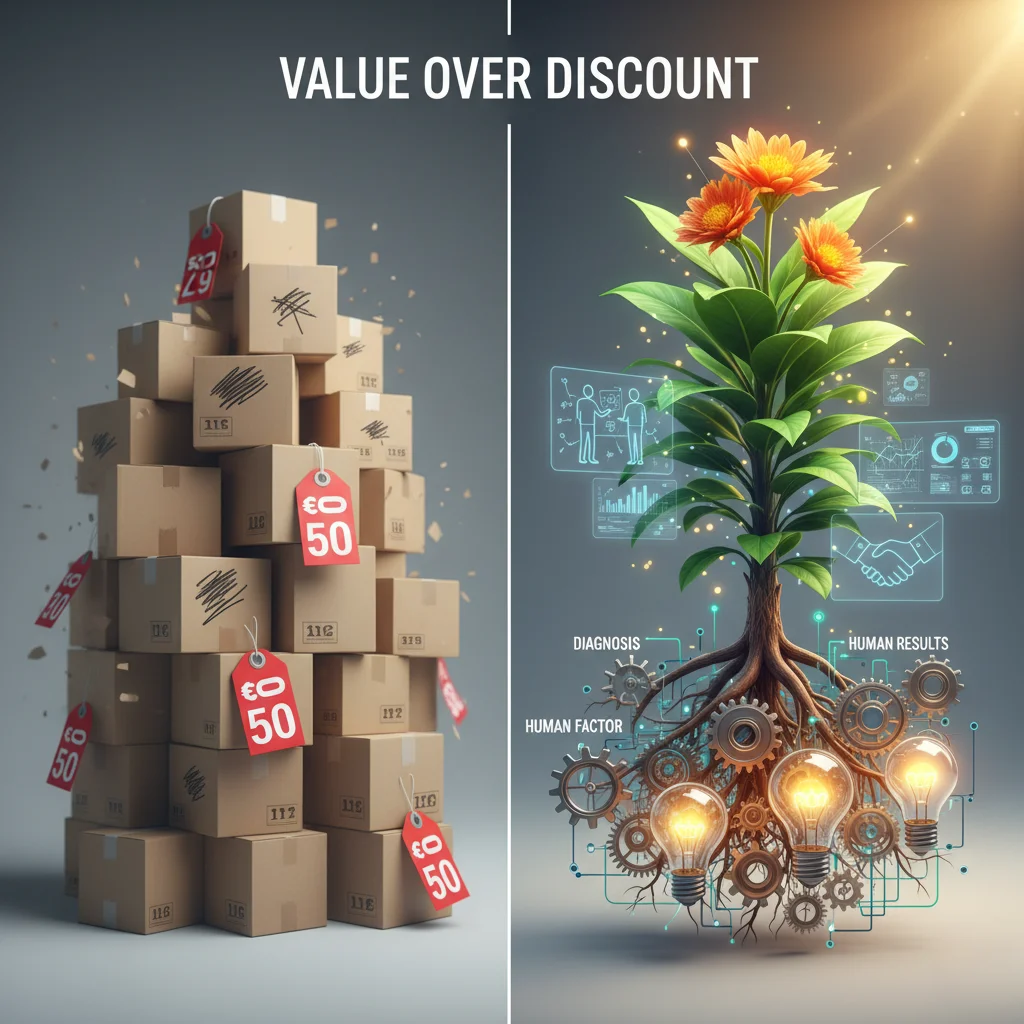
Finance
Financial Cybersecurity: Protecting Your Company's Most Valuable Assets
Cybercrime poses a formidable threat to businesses in the digital age. For the accounting professional, the protection o...

Sound familiar? You’ve spent weeks preparing a proposal, invested time in understanding the client’s needs, and presented a solution you consider perfect. However, the first question you get is: “And what discount can you offer me?”. It’s a moment that can deflate the most motivated sales team. For years in the world of sales and talent management, I have seen how this dynamic turns a promising relationship into a simple transaction.
The problem with immediately giving in to a price war is that it devalues not only your product or service but also the talent and effort of your team. Competing on price is a race to the bottom, where margins erode and customer loyalty is as volatile as the competitor’s next offer. The true art of selling is not about being the cheapest, but about becoming invaluable.
To achieve this, we must shift the focus of our conversation: from price to value. Price is a number, a concrete figure the customer pays. Value, on the other hand, is the sum of benefits, solutions, and emotions the customer receives. It’s the peace of mind from reliable after-sales service, the efficiency their team gains from using your software, or the security of working with experts who truly understand their business. Our mission is to make that value tangible.
How do we build a proposal that screams “value” over “cost”? Here are three fundamental pillars I share with you:
Before showcasing the wonders of your product, become a consultant. Use active listening to diagnose the client’s real “pain points.” Often, what they think is the problem is just a symptom. When your proposal demonstrates a deep understanding of their reality, price becomes a secondary detail compared to a tailor-made solution.
In a market saturated with similar products, your team is your greatest asset. Trust, empathy, and reliability cannot be replicated. Is your team trained not only to sell but to build relationships? The value proposition must include the experience and commitment of the people behind the product. The client isn’t just buying a tool; they are gaining a strategic partner who will support them in their challenges.
Don’t just list what your service “does.” Connect each feature to a measurable and relevant result for the client. Instead of saying “our system has automated reports,” say “you will save 10 hours of administrative work per week, allowing your team to focus on strategy.” Quantifying the impact of your solution helps the client visualize the return on their investment, making the price seem small in comparison.
Building a solid value proposition requires more effort than simply applying a discount. It demands preparation, empathy, and genuine confidence in what you offer. It’s the difference between a salesperson who ships products and an advisor who builds long-term alliances.
So the next time you face that dreaded question about a discount, pause. Instead of looking at your calculator, look at your client and ask: “Beyond the price, what real impact are you looking to create in your business?”. The answer might surprise you and change the course of the conversation forever.